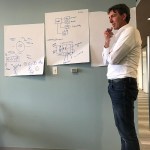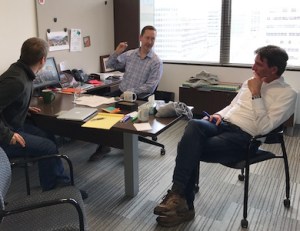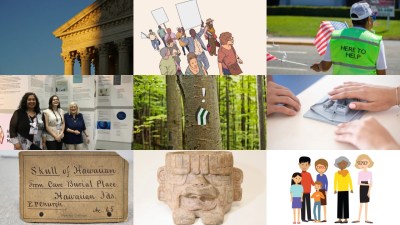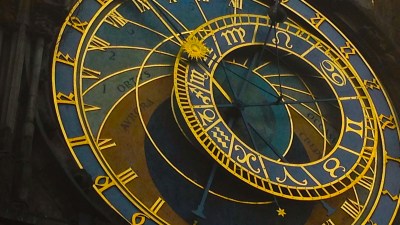
Though Washington D.C. didn’t get the worst of spring storm Stella, the weather promised just enough snow and ice to cause cancellations, delays, and low-level havoc on people’s schedules. Due to the impending weather, the Smithsonian Digitization Program Office had to postpone its 2017 Digitization Fair, a two-day deep dive into the issues of impact of digitization programs (keep an eye out for its new dates in Fall 2017).

I’m always interested in turning lemons into lemonade (or snow into a snowperson) and with some of the Fair presenters already in town, we were able to catch up with Harry Verwayen, Deputy Director of Europeana. For our ‘snow day’, we invited Harry over to the AAM offices to talk about developing frameworks for measuring impact in the cultural heritage sector.
Europeana is the network for the cultural heritage sector in Europe. The Europeana collections boast access to 54,165,849 artworks, artefacts, books, videos and sounds from across Europe. Supported by the European Union, Europeana states its mission as “We transform the world with culture! We want to build on Europe’s rich heritage and make it easier for people to use, whether for work, for learning or just for fun.”
As Deputy Director of Europeana, Harry spends a lot of his efforts thinking deeply about how to measure and communicate its impact while recognizing that the challenges to calculating the impact of Europeana are common to doing so for the cultural heritage field in general. Therefore, Europeana has launched a project, impkt.tools, to collaboratively build a common vocabulary and toolkit that more fully and meaningfully assesses impact across the sector.
Too often, we find ourselves commodifying cultural heritage impact into dollars or people through the door or clicks on a website. These measures can position us in a losing battle of false comparisons and ultimately minimize the contribution that we effect on our communities. How do we measure a museum’s contribution to positive change in society? Whether it’s Europeana or a museum exhibition, the field suffers from a lack of tools and dialogue for deeply assessing the societal impact of our efforts.

Rob Stein, Josh Morin and I from AAM met with Harry to talk through some of the frameworks Europeana has been experimenting with using a mix of quantitative and qualitative tools. These models are largely based on Professor Simon Tanner’s work, the Balanced Value Impact Model (pdf).
The IMPKT project is experimenting with a model that includes 3 assessment instruments: ‘Pathways’ which follows a linear causal relationship through outcome to impact; ‘Areas’ which categorizes and quantifies impact in certain domains such as societal/cultural, economic, and network/innovation; and ‘Lenses’ which looks through the lens of different impact areas.

It all sounds a bit abstract, but we did a quick walkthrough of the process using an AAM program to get a feel for the benefits and challenges. We also speculated how the lenses or other parts of the evaluation might map to the United Nations Sustainable Development Goals (SDGs) perhaps as standard measures for transforming the world. We on the AAM team are intrigued and will do a deeper dive into the tools so that we can be part of the community working to improve how the cultural sector can measure and communicate our value.
Harry invites cultural heritage thought leaders, cultural avant-gardists, conceptual designers, data crunchers & visualizers and survey experts to work with Europeana to develop a common language for measuring impact. Sign up on impkt.tools (beta).
You can also learn a lot more about the project from Harry’s recently published article, The Impact of Cultural Heritage: creating a common language.
The Impact of Cultural Heritage: creating a common language
If you work in a purpose driven, non-profit organisation and more specifically in the digital Cultural Heritage sector, we share a problem: we should be feeling fine and dandy because we work for a great cause, but we have very few instruments at our disposal to assess the results of our actions and be happy about it.








Comments